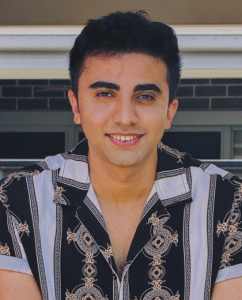Social Media – Igniting Islamophobia and compromising cohesion – By Jalal Ahmadzai
Opinion by Jalal Ahmadzai – a former Afghan refugee who works in Marketing and Communications writes about the role of misinformation in social media and Islamophobia born from it, via AMES Australia.
April 13, 2024 – Panic ensues inside the Westfield Bondi Junction shopping mall in Sydney after a man goes on a wild rampage and begins stabbing people inside the mall.
He kills six people before being shot down by the police. News quickly spreads far and wide of the incident and Australians all over the country are put in shock. What follows over the next few hours on social media shows deep cracks within what is supposed to be cohesion and unity within Australian society. Online speculation ran far and wide. Users made stereotypical judgements and attributed the attacks to particular communities before any official statement was made. One group came out claiming the person responsible was Muslim. Some people on the other hand claimed the perpetrator was Jewish. Further assumptions were made about the attacker and links were made to events happening overseas. People were quick to jump to conclusions, assuming the attacker was Muslim or Jewish, calling the attack an act of terrorism and linking it to the events happening in the Middle East, i.e. Israel’s ongoing genocide in Gaza and the recent tensions between Iran and Israel.
It wasn’t until later in the evening that statements were issued and the identity of the attacker revealed. Forty-year-old Joel Cauchi, a non-Muslim, non-Jewish Australian was in fact responsible for the deaths of five women and one man at the shopping mall. It was then that the government announced the much expected motive behind the attack – mental illness. The police concluded that Cauchi had acted alone, was not affiliated with any organisations or groups whatsoever and the sole reason for the attack was that he was mentally unwell.
Two days later, on 15 April, another incident shocked Sydney. At 7:15 PM local time, Bishop Mar Mari Emmanuel, was stabbed inside a Sydney church by a 16-year-old boy. It is alleged that he yelled “in the name of the prophet” as he stabbed the priest inside the church. Subdued by people inside, the boy was handed over to the police. Immediately the police labelled this as a “terrorist attack” motivated by religious extremism. A violent mob gathered outside the church and attacked the police when officers stepped in to stop them getting hold of the attacker. This event has turned online social media into a battleground setting the fire of division and disunity alight among Australians of different cultural backgrounds.
Australia, one of the world’s most culturally and linguistically diverse nations is home to people that identify with more than 100 different faiths and religions and collectively speak over 300 language. It is a society where 84 per cent of the population access internet at least once a day. For some, realities online and offline have blended into one and some basically live online. The content that is shared and handed around online paves the way for extreme hate and prejudice towards people of all cultures and races.
Recent world events have seen an escalation in hatred and racism. The spread of misinformation plays a significant role in the promotion of hate and violence among communities. On top of that, language used by governments can add fuel to this fire.
Labelling the Sydney shopping mall attacker as mentally ill while the Sydney church attacker a terrorist is a dangerous game that police and governments play carelessly. It goes without saying no one should be labelled mentally ill or a terrorist solely based on their religious affiliations and/or the colour of their skin. The family of the 16-year-old boy have come out saying the boy showed no signs of religious extremism prior to the attack. The community he grew up in confirms this, yet he was very quickly labelled a terrorist. Is it so hard to assume that maybe the 16-year-old was also mentally unstable, just as Cauchi was?
It is the government’s responsibility to do the necessary investigations. Should there be evidence that links the 16-year-old boy to religiously motivated terrorism or shows his affiliation with terrorist organisations, then by all means label him one. But before that point, using such labels only fosters hate promoting Islamophobia and, should the attacker have been Jewish, antisemitism.
If we are going to label the Sydney church attack an act of terror then we may as well label Cauchi a terrorist because by definition, a terrorist is one who installs fear in, and commits violence against, civilians – which is what Cauchi did on that terrible day in Bondi Junction.

Jalal Ahmadzai
Read more: Live News New Zealand












